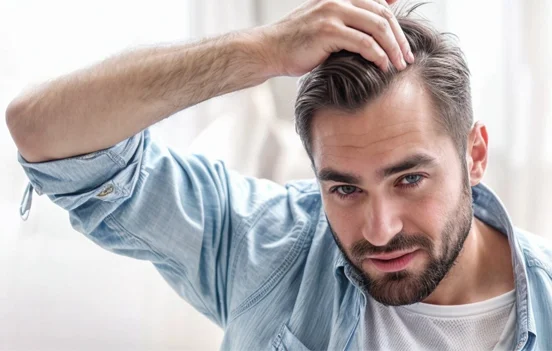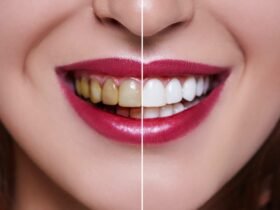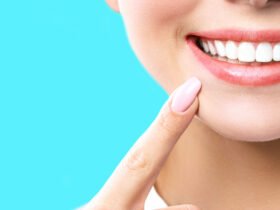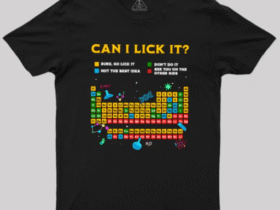Considering a hair transplant in Dubai? You’re not alone. Dubai has become a global hub for hair restoration—thanks to modern clinics, experienced surgeons, and strong healthcare standards. But a successful outcome depends on more than a plane ticket. You’ll want to understand techniques (FUE, FUT, DHI), realistic costs, what recovery actually looks like day-by-day, how to choose a DHA-licensed surgeon, and how to plan the trip if you’re flying in for medical tourism.
This guide walks you through everything you need to know about getting a hair transplant in Dubai, from candidacy and procedure options to aftercare, timelines, and pitfalls to avoid. Along the way, you’ll find practical checklists and plain-English explanations to help you make an informed decision.
Why Choose Dubai for a Hair Transplant?
Advanced medical ecosystem. Dubai’s private healthcare sector is well-funded, competitive, and tech-forward. Many clinics invest in the latest extraction devices and magnification tools, and they publish before-and-after galleries that show consistent work across hair types and ethnicities.
DHA oversight. The Dubai Health Authority (DHA) licenses facilities and practitioners, and clinics typically highlight that licensure. For you, that means a clearer path to verifying credentials and experience. (Always ask to see proof.)
Experienced surgeons and diverse patient pool. Dubai attracts surgeons and patients from around the world. Treating a wide variety of hair textures, donor densities, and hair loss patterns equips skilled teams to manage nuanced cases—think high hairlines, vertex whorls, and Afro-textured hair.
Convenience and hospitality. Seamless logistics, English-speaking staff, and medical-tourism friendly infrastructure (airport transfers, hotel partnerships, and tele-follow-ups) reduce friction throughout your journey.
Who Is a Good Candidate?
You might be a strong candidate for a hair transplant in Dubai if:
- Your hair loss is stable. Transplanting into actively miniaturizing areas can produce uneven density later. Many surgeons prefer to see stability for 6–12 months, potentially supported by medical therapy.
- You have adequate donor hair. Typically from the occipital/parietal scalp (“permanent zone”). Density, hair caliber, and curl influence the achievable coverage and density.
- Your expectations are realistic. Transplants redistribute hair; they don’t create new follicles. You’ll get an improvement in framing and coverage, not a teenage density reset.
- You’re healthy enough for minor surgery. Disclose conditions like uncontrolled diabetes, bleeding disorders, or keloid scarring history. Medications such as anticoagulants must be discussed in advance.
Not ideal right now? Very early hair thinning, active inflammatory scalp diseases, or unresolved causes of hair loss (e.g., unaddressed telogen effluvium, alopecia areata) may call for medical management first.
Hair Transplant Methods Explained
Most modern hair transplant in Dubai procedures use follicular-unit–based techniques. The core difference is how the grafts are harvested.
FUE (Follicular Unit Extraction)
- What it is: Individual follicular units (1–4 hairs) are extracted with a micro punch (manual, motorized, or robotic).
- Pros: Tiny circular scars dispersed across the donor area; short hairstyles are easier to wear. Usually faster healing and less post-op discomfort.
- Cons: Can transect grafts if done poorly; large sessions can overharvest if planning is weak. Requires meticulous surgeon oversight.
FUT (Follicular Unit Transplantation), a.k.a. Strip
- What it is: A linear strip of scalp is removed and dissected into follicular units under microscopes.
- Pros: Efficient graft yield from a concentrated donor zone; can be ideal for maximizing graft numbers in certain cases.
- Cons: Linear scar (often concealed with surrounding hair); slightly longer recovery and more tightness initially.
DHI (Direct Hair Implantation)
- What it is: A variation of FUE where implantation pens (e.g., Choi implanters) place grafts directly, potentially reducing time outside the body.
- Pros: Precise angle and direction control; can be gentler on grafts when executed by experienced teams.
- Cons: Requires a highly coordinated team; terminology is marketing-heavy, so focus on outcomes rather than labels.
Which is “best”? There is no universally best method. The right approach depends on your hair characteristics, donor capacity, existing scarring, hairstyle preferences, and goals. An experienced, DHA-licensed surgeon will tailor the plan—sometimes combining techniques over multiple sessions.
How to Choose a Clinic and Surgeon in Dubai
This is where outcomes are won or lost. Use this practical checklist:
- Verify licensure and credentials. Confirm the surgeon is DHA-licensed and board-certified in dermatology or plastic surgery (or equivalent). Ask who actually performs the critical steps: design, scoring/extraction, site creation, and implantation.
- Review extensive before-and-afters. Look for consistent, high-resolution photos with standardized lighting and angles. Ask for cases that match your hair type and pattern (temples, crown, previous FUT scar concealment, etc.).
- Ask about graft survival rates. Reputable clinics can discuss typical survival ranges and factors that affect them (handling time, storage solutions, temperature control).
- Discuss long-term planning. Good surgeons think beyond one session: future hair loss, donor conservation, and natural-looking hairline design that suits your age and face.
- Understand team experience. Technicians’ skill matters. Ask how long the core team has worked together and how many procedures resemble yours per month.
- Transparency on pricing and what’s included. An estimate should clarify technique (FUE/FUT/DHI), approximate grafts, anesthesia, medications, PRP (if offered), post-op kits, and follow-up schedule.
- Hygiene and equipment. The clinic should welcome in-person visits (or video tours) to show sterilization protocols, magnification, and graft storage practices.
- Communication. Clear pre-op guidance, realistic timelines, and accessible post-op support (WhatsApp/telemedicine) are green flags.
Cost of a Hair Transplant in Dubai (What Really Drives It)
Prices vary widely, but here’s how to think about cost without getting lost in marketing:
- Per-graft vs. flat fee. Many clinics price by graft (e.g., 1,500–3,000 grafts), while others use session-based pricing. Clarify whether multi-day sessions change costs.
- Technique. DHI or robot-assisted FUE may carry premiums; FUT may offer higher graft counts per session with different pricing logic.
- Surgeon’s involvement. More surgeon-led steps can increase cost but may improve quality control.
- Case complexity. Scar concealment, crown whorls, and repair work are technically demanding. Curly or Afro-textured hair requires specialized handling.
- Facility standards and follow-up. JCI-accredited hospitals or boutique clinics with robust aftercare often charge more.
A practical budgeting approach:
- Get at least two to three consultations (virtual is fine) with DHA-licensed surgeons.
- Ask each for graft count estimates for your goals (hairline only vs. hairline + crown).
- Request line-item quotes and what’s included (medications, follow-ups, PRP, accommodation partnerships).
- Compare donor management plans—how much they propose to extract now vs. what’s left in reserve.
Remember: the cheapest quote can be the most expensive mistake if it compromises donor health or hairline design.
What to Expect: Timeline from Consultation to Results
Consultation (Week 0)
- Medical history, scalp exam, miniaturization assessment.
- Discussion of medical therapy (e.g., minoxidil, finasteride/dutasteride if appropriate), expectations, and long-term plan.
Pre-Op (1–2 Weeks Before)
- Avoid blood thinners unless your doctor says otherwise.
- Limit alcohol and smoking; both can affect healing.
- Arrange 2–5 days off work (depending on your role and public visibility).
Procedure Day (FUE/DHI or FUT)
- Local anesthesia. The day lasts 4–10 hours depending on graft count.
- Breaks for meals; you can usually watch shows or listen to music.
- Post-op instructions, medications, and first wash guidance provided.
Days 1–7
- Mild swelling (often forehead/eyelids) peaks around days 2–4—sleep elevated.
- Tiny scabs form around grafts; donor area may feel tender or numb.
- Gentle saline sprays and careful cleansing as instructed.
Days 8–14
- Scabs flake off. The “ugly duckling” phase can begin as transplanted hairs shed (normal).
Weeks 4–12
- Shedding phase continues; new hairs begin to sprout slowly.
- Redness fades (varies by skin tone); shock loss around native hairs can occur but is typically temporary.
Months 4–6
- Noticeable early growth. Texture may be wiry at first, then softens.
Months 9–12
- Major cosmetic improvement. Many patients are happy here.
Months 12–18
- Maturation: caliber increases, curl/character normalizes, density “fills in.”
Recovery and Aftercare in Dubai’s Climate
Dubai’s sun and heat require a bit of extra care after a hair transplant in Dubai:
- Sun protection: Avoid direct sun on grafts for at least a few weeks; use a loose, clean hat as advised. Once cleared, broad-spectrum sunscreen helps protect redness and scars.
- Sweat and gyms: Light walks are fine early; delay heavy workouts and swimming as instructed (often ~2 weeks).
- Sleeping: Back-sleep elevated for the first few nights to minimize swelling.
- Hydration: Stay well-hydrated, especially if you’re visiting from cooler climates.
- Scalp care: Follow wash schedules meticulously; don’t pick scabs. Use only products recommended by your clinic.
Risks and How to Reduce Them
Any surgical procedure carries risks. Common ones:
- Temporary swelling and redness (usual and self-limited).
- Infection (rare with proper care and sterile technique).
- Folliculitis or ingrown hairs (can be managed).
- Shock loss of native hair near recipient sites (often temporary).
- Overharvesting or poor angulation (minimized by experienced teams and conservative planning).
- Linear scar with FUT (usually hidden by surrounding hair; ask about trichophytic closure).
Lower your risk by:
- Choosing a DHA-licensed surgeon with a strong track record.
- Following pre- and post-op instructions exactly.
- Being transparent about medications and medical history.
- Planning long-term (donor conservation and future hair loss trajectory).
Results: What’s Realistic?
- Hairline design: Age-appropriate and conservative designs age better. Ultra-low adolescent hairlines can look odd later and consume precious grafts.
- Density: Transplants improve apparent density by smart placement and angulation. Coarse, wavy hair covers better than fine, straight hair—caliber matters.
- Crown expectations: The crown (vertex) often needs more grafts per unit of perceived density due to hair swirl patterns. Many patients stage this area in a second session.
- Scarring: FUE leaves scattered micro-scars; FUT leaves a linear scar. Skilled execution and aftercare make them discreet, but “scarless” surgery doesn’t exist.
Non-Surgical Options and Adjuncts
Even if you commit to a hair transplant in Dubai, medical therapy often supports the result:
- Topicals: Minoxidil foam or solution can help maintain surrounding native hairs.
- Orals: Finasteride or dutasteride may slow miniaturization for androgenetic alopecia (discuss side effects and suitability with a physician).
- PRP (Platelet-Rich Plasma): Some clinics offer PRP as an adjunct; evidence is mixed but suggests benefit for some patients.
- Low-Level Laser Therapy (LLLT): Home caps/comb devices exist; evidence varies.
A surgeon who incorporates medical therapy strategically—and tailors it to your profile—usually gets better long-term outcomes.
Planning a Medical Trip for a Hair Transplant in Dubai
Timing
- Avoid peak sun exposure and major life events right after surgery.
- Plan to stay in Dubai long enough for the first wash and check-up (often 2–5 days post-op), unless your clinic offers remote follow-up.
Logistics
- Ask your clinic about airport transfers, hotel partnerships, and post-op visit schedules.
- Ensure you have written instructions, emergency contact details, and a list of medications.
Follow-up
- Many clinics use telemedicine for month-1, month-6, and month-12 check-ins.
- Send clear, well-lit photos in standardized angles for remote assessments.
Red Flags to Watch For
- Vague surgeon involvement. If it’s unclear who harvests grafts, creates sites, and implants, press for specifics.
- Guarantees of exact density. No honest clinic guarantees a specific number of hairs that will grow.
- One-size-fits-all pricing. “Unlimited grafts” without donor planning can be dangerous.
- No real patient photos. Stock images or over-edited photos are a warning sign.
- High-pressure sales. You should feel zero pressure to book immediately.
Sample Questions to Ask During Your Consultation
- How many cases like mine do you perform monthly?
- Who will design the hairline, and what’s the philosophy behind the design?
- What’s your plan to conserve donor hair for future loss?
- How do you store grafts during the procedure (temperature, solution)?
- What’s your policy on touch-ups if partial growth occurs?
- Can I see before-and-after photos of patients with my hair type and pattern?
- What’s included in the quote (medications, PRP, follow-ups, VAT)?
Realistic Budgeting and Graft Planning
Think in terms of zones:
- Frontal hairline & mid-scalp: Typically 1,200–2,500 grafts depending on recession and density targets.
- Crown/vertex: 800–2,000+ grafts; coverage often staged.
- Scar repair or temple refinement: Smaller, high-precision sessions.
Density strategy: Front-loading density (for framing) often brings the biggest cosmetic win. A slightly lighter mid-scalp/crown can still look balanced with proper angles.
Multiple sessions: Many patients undergo two sessions over several years to maintain a natural look as loss progresses.
Aftercare Essentials (Quick Reference)
- Days 0–3: Saline misting; avoid touching grafts; sleep elevated.
- Days 4–10: Gentle washing as instructed; don’t pick scabs.
- Week 2: Most scabs gone; resume light activities.
- Weeks 3–4: Shedding is normal; don’t panic.
- Month 3–4: Early sprouts; patience is key.
- Month 6: Visible gains.
- Month 12+: Maturation and refinement.
Cultural and Lifestyle Considerations in Dubai
- Grooming norms: Many professionals in Dubai maintain close-cropped styles; FUE’s dot scars are generally compatible with shorter cuts.
- Sun exposure: Year-round intensity means sun care is part of long-term scalp health—helpful for redness, scars, and general skin quality.
- Beard and body hair transplants: Some clinics in Dubai offer beard-to-scalp grafting for limited donor cases; ask about texture matching and long-term blending.
Frequently Asked Questions
How long does a hair transplant in Dubai take?
Most sessions run 4–10 hours depending on graft count and technique. Larger cases can span two consecutive days.
Will it look natural?
With a skilled surgeon, proper angles, and smart hairline design, yes. Naturalness depends more on artistry and experience than on marketing terms.
Does it hurt?
You’ll feel local anesthesia injections; after that, discomfort is usually minimal. Donor area soreness and tightness (FUT) are expected but manageable.
When can I go back to work?
Many people return to desk work in 2–5 days. Visible scabs/redness can be concealed with a hat once your clinic allows it.
Is a second procedure common?
Yes—often for the crown, to increase density, or to adapt to future hair loss.
What about Afro-textured hair?
Choose a team experienced with curl patterns and specialized punches. Ask to see matching case results.
Can women undergo transplants?
Yes, selected female-pattern hair loss cases can benefit, especially for hairline lowering or scars. A thorough evaluation is essential.
The Bottom Line
A hair transplant in Dubai can deliver excellent, natural-looking results—if you choose the right surgeon, manage expectations, and follow aftercare. Focus on surgeon credentials, consistent results across similar cases, and a donor-conservation mindset. Think long-term, not just “how many grafts can I get today?”













Leave a Reply